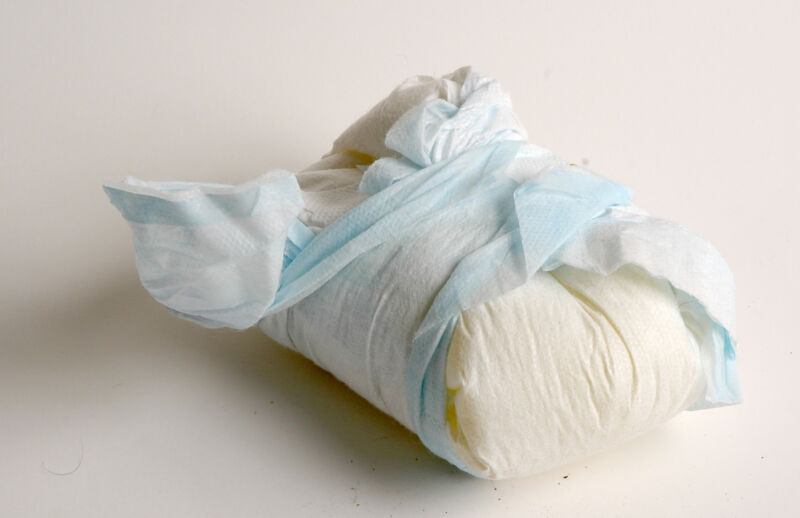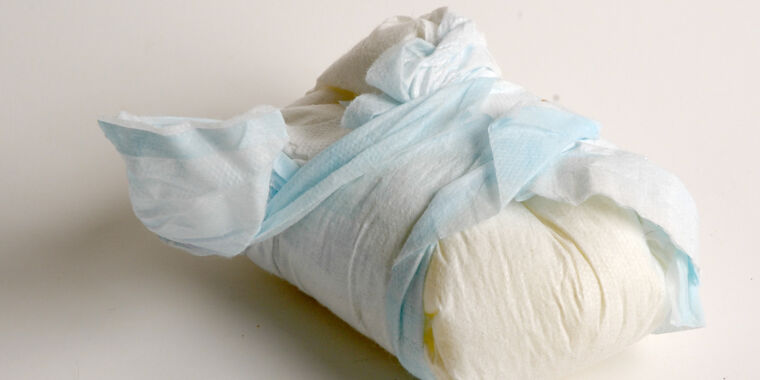
Government building rules and regulations can be outdated and misguided, insisting upon conventional building materials with prices that aren’t compatible with building affordable housing. The building codes suggested by the United Nations decades ago often preclude using local, lower-cost, and environmentally friendly materials.
Of late, certain researchers have speculated that they might be able to solve two problems plaguing burgeoning cities—a glut of non-degradable waste and dearth of building materials—by folding the former into the latter. Now, a team in Japan reports that used, sanitized disposable diapers can be incorporated into concrete and mortar, which would still meet Indonesian building standards. Low-cost housing is desperately needed there as the urban population continues to bloom and housing is scarce. Obviously, all of the people moving to the cities bring more waste there, as well.
Diapers are substituted for the fine aggregates that are normally used in making concrete. The team determined that mortar for structural components, like load-bearing walls and public road pavement, could only tolerate a maximum of 10 percent added diaper material. But mortar and concrete for nonstructural components, like non-load-bearing wall partitions and low-impact floor pavers, could tolerate having up to 40 percent of their aggregates swapped for diaper material.
Currently, facilities for recycling dirty diapers only exist in developed countries. In this study, the diapers were washed, dried, and sanitized with sodium chloride. (Presumably because most gut bacteria wouldn’t survive high salt levels?) Biological oxygen demand tests indicated that concrete made with used diapers contains similar amounts of microbes as concrete made from clean diapers.
Sanitizing the diapers and adding them to concrete is certainly a better option than incinerating them, which is often what currently happens. Hopefully, industrial-scale farmers will take note and try to solve their twin problems of toxic manure lakes at sites where animals are raised and the need to apply synthetic nitrogen fertilizers where crops are grown.
Scientific Reports, 2023. DOI: 10.1038/s41598-023-32981-y








